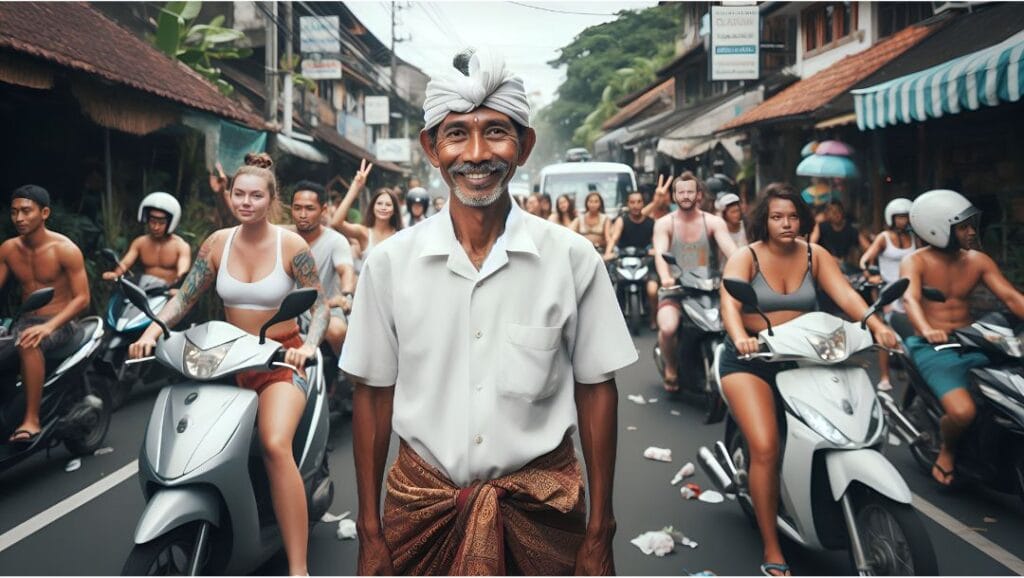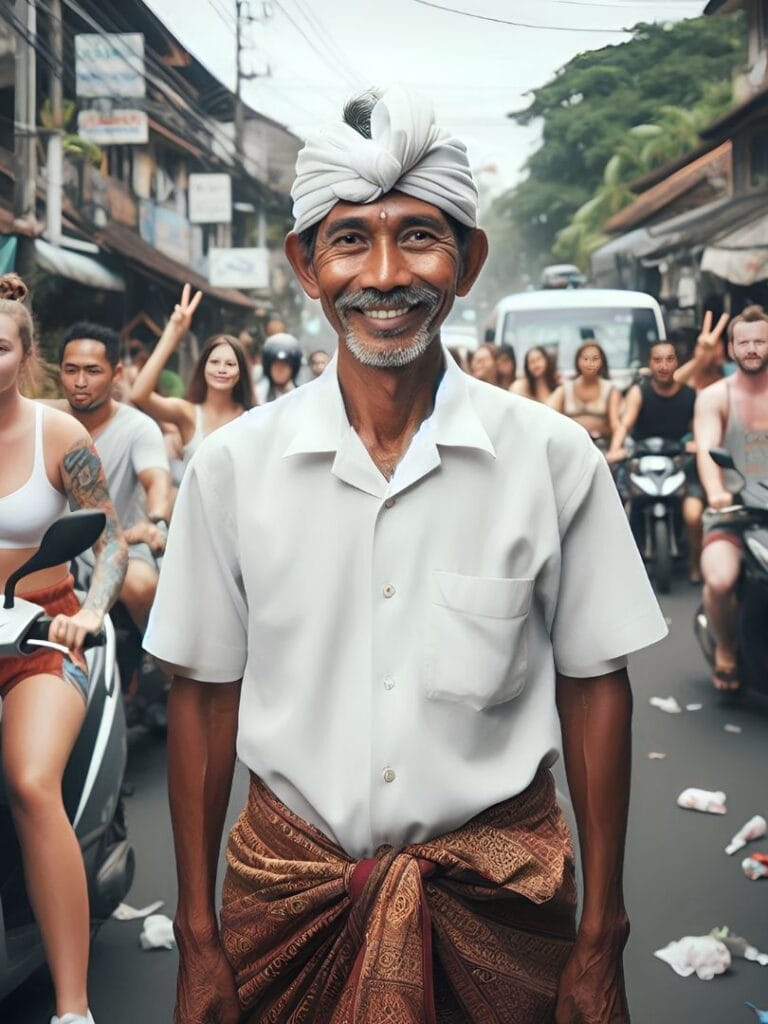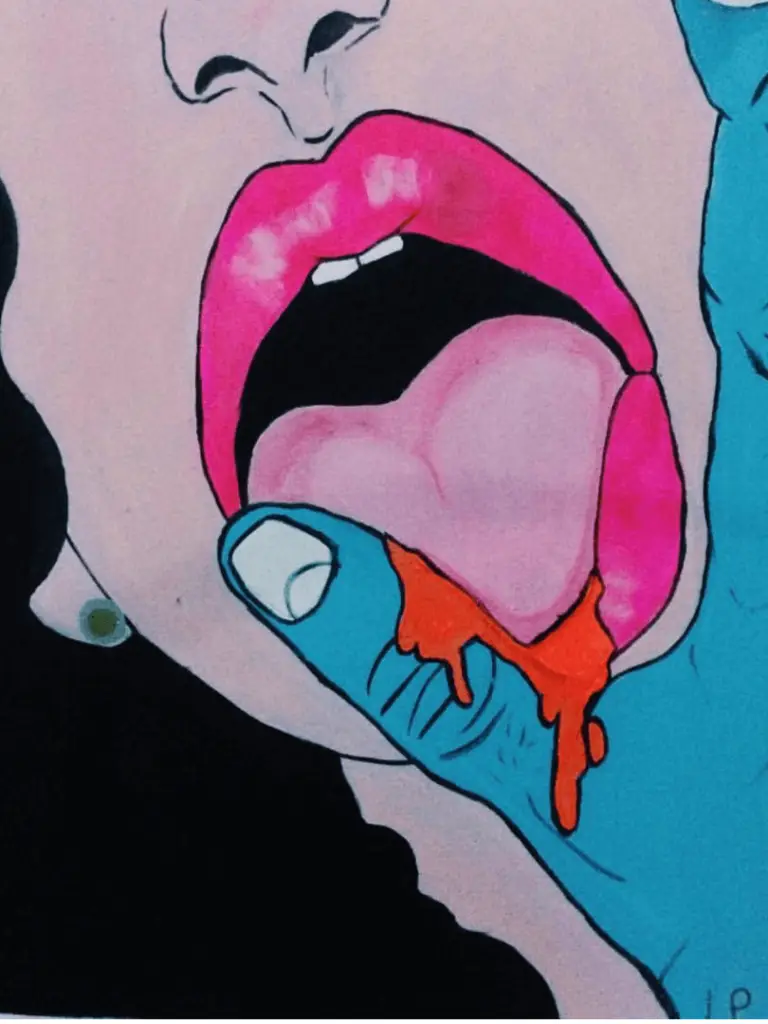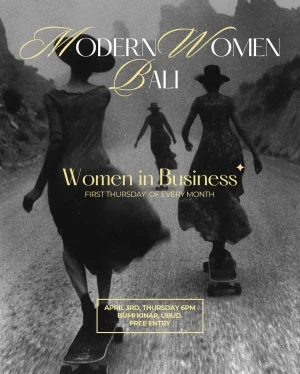With ‘I want to heal’ stamped on their foreheads, hoards of tourists set out on a quest while the wellness industry salivates.
Last year ended with a few blasts to the heart of Bali’s tourism industry. This island topped Fodor’s list of where not to go in 2025. The respected travel source called out the mass tourism that’s turned Bali into a plastic apocalypse, and its culture, heritage, and natural habitats are being decimated by unchecked development.
In what seems like a race to recoup the revenue lost during lockdowns, massive construction projects popped up faster than cow paddy mushrooms in a monsoon. Officials with the power to make it stop finally noticed, proposing a two-year moratorium on new hotels, bars, and restaurants in Gianyar and the congested south. They delight instead in the idea of developing eco and wellness tourism in remote, untouched areas, to leave no stone unturned to establish Bali as the world’s premiere wellness destination.
However, none of this has stopped the hoards of tourists who land on the island in search of themselves. With ‘I want to heal’ stamped on their foreheads, they set out on a quest while the wellness industry salivates.

Two decades ago, yoga in Ubud was far from being a part of Western culture. What began as a small studio above the eatery, Kafe, eventually led to the creation of Yoga Barn and a significant brand pivot. The founders, seeking ways to attract tourists back to Bali after the 2002 nightclub bombings, helped ignite what would become a “wild west” wave of wellness tourism.
Yoga was arguably the start of a gold rush led by foreigners. And in a gold rush, success is guaranteed not by striking gold but by selling prospectors the tools. Ubud steadily became the preeminent destination for yoga retreats and teacher trainings, transforming Bali into a wellness hub. But when the world reached a saturation point with yoga teachers, the trend shifted—first to breathwork, then to sound healings. Novelty is key in keeping consumers on the hook.
“Yoga is part of Balinese culture,” says Bapak Adi, a local man dressed in white, after leading his ‘Bali Healing Yoga’ class at Bali Swasthya Yoga Centre. “But not the asanas.” Traditional Balinese yoga, he explains, focuses solely on breathwork to clear negative emotions from the body. Now, one of his students teaches his unique blend of breathwork and Hatha asanas in England.
The question remains: does cross-pollination become problematic when foreign-owned businesses dilute or commercialize Balinese spiritual traditions? Reinventing Balinese yoga to appeal to foreigners might be a savvy business move, but multiple luxury retreats have been criticized for commodifying or misrepresenting local practices—cacao ceremonies, for example, may be trendy, but they have no history here. Yet, Insta-glamorous rituals, curated settings, and tourist-friendly water blessings have helped cement Bali as an aspirational destination.
Friends from where I grew up are surprised to learn that Bikram yoga is practiced here. In North America, Bikram largely disappeared—or went underground—following scandals and rape allegations. After fleeing the U.S., Bikram even attempted to copyright the asanas and their sequence, a bid that was laughed out of court. He may be a megalomaniac and a predator, but the yoga that made him rich remains undeniably transformative.

Perhaps prioritizing profit over authenticity has simply become the norm—assimilation, another byproduct of globalization. After all, a local healer balancing your chakras while spitting out your impurities into a plastic bucket doesn’t exactly align with five-star wellness tourism.
The wellness industry is worth an estimated $4.5 trillion globally. In Bali, wellness tourism is expected to increase 30% annually. It’s a financial allure hard to resist for opportunists, unqualified teachers, and spiritual fraudsters. Bad actors can overshadow Bali’s genuine indigenous healers, sacred practices, and talented foreign teachers who come here with clean intentions.
It’s a numbers game. Scroll through seemingly endless profiles of landed Insta-gurus offering somatic trauma release, Reiki, Aura Cleansing, DNA activation, and relationship counselling advertised with close-ups of a BBL… That’s not to single out anything as bullshit, but buyer beware. It’s ultimately up to you, the consumer, to research the claims of any business, teacher, or modality. As a wellness destination, Bali might bring seekers of bonafide healing, but it’s also an attractive place for snake oil sellers in search of a captive audience.
Women’s gifting circles flourished here. Participants were promised spiritual guidance, sisterhood, and a payout of $40,000 with a contribution of $5000. These circles invariably fizzled by running out of new recruits to buy in. Just because it’s presented as a blossoming lotus doesn’t mean it’s not a pyramid scheme. Roughly seven years ago, entrepreneurs in crisp linens descended on the expat wellness community with an MLM opportunity. The Healy, a bio-resonance device that links to apps on your phone – ranging in price from $600 to upwards of $4000 – is a wearable gadget containing a quantum sensor that reads your cells’ frequency and harmonizes your bioenergetic field with the aid of software. This miracle of modern technology sold like hotcakes, earning the company more than $140 million in 2021. However, engineers who dismantled the plastic device found no cutting-edge quantum sensor, only cheap electronics valued at around thirty-six dollars. In an echo chamber of healing claims, from addiction to cancer, people still swear by its efficacy, which either points to a self-serving MLM sales model or, perhaps more profoundly, the power of the placebo.

The upside of Bali’s carnival of wellness means you’ll likely find a yoga practice, healing modality, or teacher to meet you where you are. The downside? Too much choice. With such a smorgasbord of treatments on offers, how is one to know what to choose to heal? Do they need to partake in all the ceremonies, cleanses, dances, and yoni steamings?
“Some bules [westerners] need bule teachers, and that’s ok,” Bapak Adi says when asked about the multiple yoga centres here established by foreigners. “In Bali, the exercise comes from inside, from breathing.” At the start of his Bali Healing Yoga class, he instructs his seven students to hear the birds, the grasshoppers, the leaves in the wind. He laughs when asked about the sounds of pounding concrete and chainsaw.
Does cross-pollination become problematic when foreign-owned businesses dilute or commercialize Balinese spiritual traditions?
“If someone disturbs you in your meditation, enjoy the great energy. Focus on yourself. And smile,” he advises. “When you smile, you send positive energy to the worker. And maybe he will want to stop making noise on his own.”
Bali has a long-standing reputation as a land of smiles and tolerance. If Bapak Adi’s approach in confronting the cacophony of construction is common, the Balinese might be smiling now more than ever.
The good, the bad, the ugly; it’s all available in the business of healing and wellness, where authenticity can become harder to define, or lose its value to a dollar sign. In the constantly evolving business of wellness, my personal intention is to provide honest, unbiased reviews of myriad offerings available in Bali. The genuine call to create something new in the healing and wellness space here for many is real. Pyramids of Chi, Bali silent retreat, and Watsu, are among the modalities and destinations we’ll explore in upcoming issues.
However, the unsustainable conditions that led to Bali topping Fodor’s list of places to avoid may eventually force the government to reconsider greed’s environmental and cultural consequences. But what about the individuals who shape Bali’s wellness industry—investors, expats, tourists, and practitioners alike?
All is available in the business of healing, where authenticity can become harder to define, or lose its value to a dollar sign.
When faced with endless choices, how do we discern which practices genuinely support healing and which are simply trendy fads masking as spirituality? Is more always better, or is there a point where the pursuit of transformation turns into overconsumption? Can the relentless pressure to heal, to constantly “evolve,” create more feelings of inadequacy rather than fulfillment?
As businesses increasingly capitalize on “spiritual” experiences, where should the line be drawn between honoring indigenous traditions and exploiting them for profit? And in the rush to chase Bali’s promise of wellness and self-discovery, are we preserving what makes this island special—or contributing to its decline with our unchecked presence?
Perhaps, in the end, the most meaningful practice is not just what we seek from Bali, but what we choose to give back.







